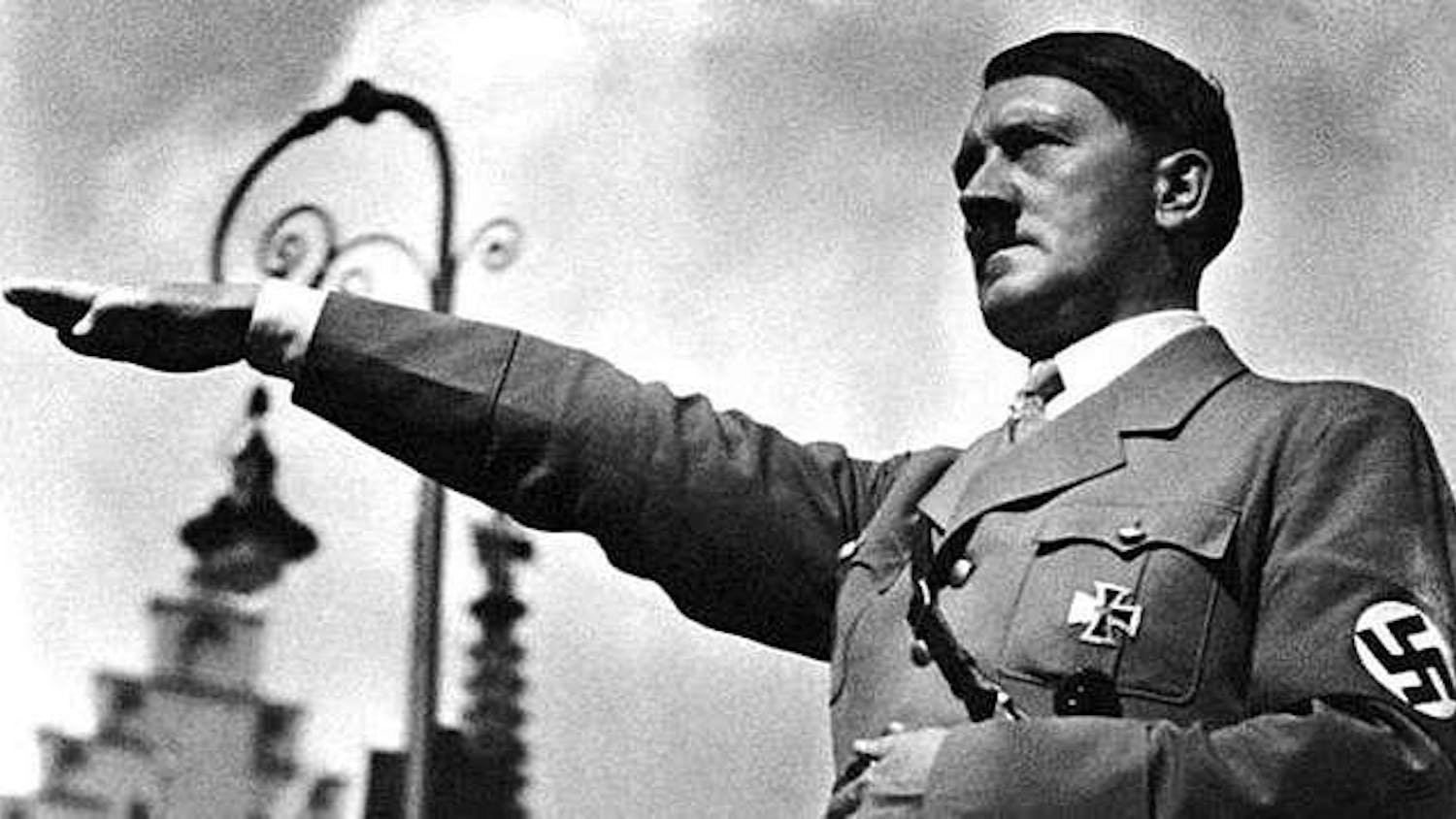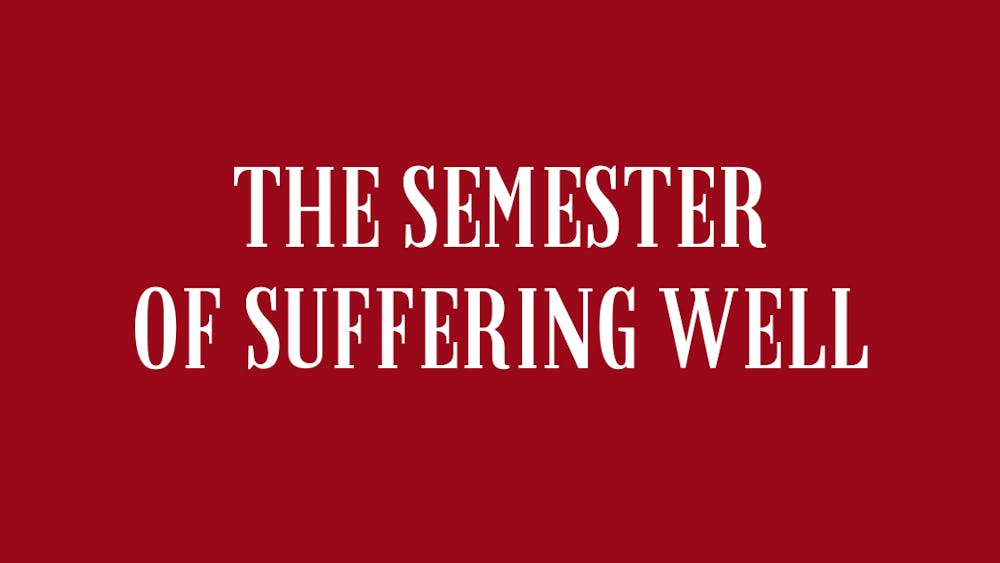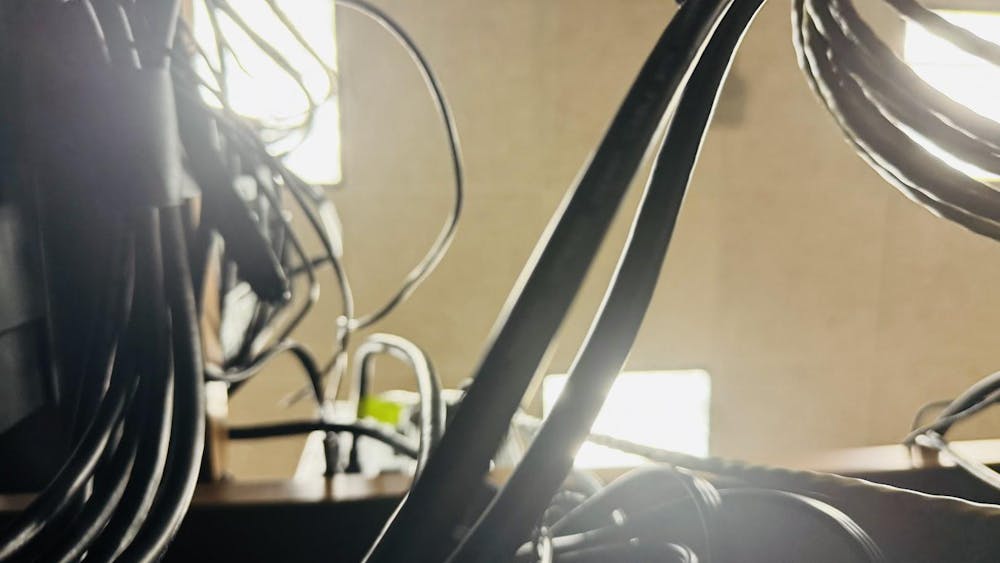I’m having a hard time with the Campus Crossroads project.
It’s not because it displaces my graduation ceremony or because the sight of a comically giant excavator claw ripping whole trees out of the ground during my comparative politics class last semester was distracting (although it was quite distracting). These are both bad, but ultimately insignificant pieces of the larger issue — a project conceived through a flawed process, rooted in shaky logic and yielding a sub-optimal solution to a mostly imagined problem.
The student response to Crossroads has been muted, while the University’s response to criticisms has been skittish. Most students and faculty I have spoken with dislike the idea, and nobody I've spoken to loves it.
After reviewing the project website and the University’s public statements, I’ve come to the conclusion to which I think most people would come: it is unclear what the point of Campus Crossroads is.
“From the beginning, Notre Dame has never let convention limit our dreams,” the project’s mission statement begins. Replace “dreams” in that sentence with “hairstyle” or “use of racial slurs,” and “unconventional” doesn’t sound as sexy. But so far a brave stand against convention is the best euphemism the University can contrive for an arguably imprudent use of nearly a half-billion dollars.
It does not follow from the University’s unpersuasive word choice that the project itself is a bad thing, but the University’s inability to put together a PR effort that makes sense should make us question Crossroads’ merits and wonder how strongly our own administration believes in it. If they did, University officials would be clamoring to be held accountable for the most forward-thinking idea in the history of Our Lady’s University. At the very least, they would have had a public groundbreaking ceremony with some golden shovels.
Instead administrators have flailed in response to criticism and quietly fast-tracked the start of construction. On Feb. 27 of last year, Paul Browne, University vice president for public affairs and communications, submitted a 1,022-word viewpoint gushing over an essay in America by Notre Dame Law School alum Matt Emerson, who was in turn gushing over Campus Crossroads. Of Browne’s 1,022 words, 633 were directly quoting Emerson, and 116 were spent setting up quotes from Emerson. Maybe I’m just bitter that the vice president of communications exceeded the 800-word limit on outside viewpoint submissions, but if he were tasked with defending something defensible, then a man of his qualifications wouldn’t have to lean so heavily on an essay from a guy living 2,100 miles away from the construction site. In his former role with the New York Police Department, Browne had to defend controversial stop-and-frisk policies from immeasurably more criticism than what Campus Crossroads has received. He is not dumb. Crossroads might be.
The primary argument advanced in favor of Crossroads is simply that it’s never been done before. And that is fine. Novelty is often a positive feature, but not a logic on which to base a $400 million investment. Something can be simultaneously novel and ill-advised, and over the course of history, man has rightly shied away numerous times from such pursuits, such as a You Don’t Mess with the Zohan sequel or a manned mission to the Sun.
The University had an occasion to explain its reasoning in greater detail in Alex Herrmann’s Nov. 13 cover story for Scholastic, “Coming to a Crossroads: a conversation with University Executive Vice President John Affleck-Graves.” The article is worth reading in full, but I will summarize it here.
At Notre Dame, strategic plans are developed every 10 years in consultation with the faculty, student affairs, “operating units” and athletics to set development priorities for the next 10 years. Crossroads planning began in the 2011-12 academic year with a “need,” as outlined in the 2008 strategic plan, “for a new student center to complement LaFortune.”
The University argues the following: First, we badly need a new student center. Second, Notre Dame Stadium is within five minutes of the flagpole in the center of South Quad and is therefore “one of the most centrally located buildings on campus.” Third, the stadium is a better place for a student center than Saint Mary’s Lake or the middle of South Quad. Fourth, symmetry is important; therefore we should retrofit completely new buildings on the south and east sides of the stadium to balance out the student center/press box on the west side, even if doing so greatly adds to the final cost. Finally, since we are going to have three new buildings on the stadium, we should fill them with the items we listed in our strategic plan in 2008.
Having reconstructed the University’s argument in charitable terms, it still sounds logically invalid. Their first contention on the dire state of LaFortune, if not false, at least paints an exaggerated picture of the student center's shortcomings. Most of the people I see there seem pretty happy.
The second contention, that the stadium is one of the most centrally located buildings on campus, is certainly false. Having lived and walked on this campus as a student for almost four years, I am confident in the falsity of this statement. At best it is on the edge of a high-traffic area during the class-going hours of 9:30 a.m. to 3 p.m. But “student life,” the end toward which this whole project is directed, happens some distance away from the classroom buildings — in the dorms, in the dining halls, at the Grotto and in LaFortune.
I accept the third contention. Don’t build Crossroads in the lake.
Taken together, the fourth and fifth contentions show administrators green-lighting buildings in the name of symmetry without first forming a clear idea of how to use them.
Read as a whole, the argument makes Crossroads seem like the semi-inevitable consequence of building up our school. But the idea that we couldn’t meet the “needs” Crossroads addresses by building on other parts of campus is belied by Dr. Affleck-Graves telling Scholastic that we could expand the campus by 40-50 percent without extending beyond its current boundaries.
A secondary argument that is more persuasive but still unsuccessful states that the football stadium is underutilized because it is only used about 10 times per year. Constructing Crossroads, the website says, “is how Notre Dame plans to awaken a sleeping giant and infuse it with life and learning.”
But as any four-year-old who’s heard “Jack and the Beanstalk” knows, not all giants are worth waking up. And giants with an unsurpassed 83-year tradition as a pillar of college athletics require special care.
I am generally pro-stadium expansion. Over fall break, I watched LSU ruin a season for Ole Miss in Tiger Stadium, a 102,000-seat behemoth that has been expanded eight times since opening in 1924, six years before ours did. A billboard below one of the upper decks at LSU reads, “It is the Cathedral of College Football, and worship happens here.”
But if Death Valley, as Tiger Stadium is known, is a cathedral (it is), then Notre Dame Stadium is at least a sacred chapel. Why we would taint it by tacking on graduate student lounges, a dining area, student club offices, administrative offices, another recreation center, a new career center, a 500-seat student ballroom, another food services center, faculty offices, an auditorium, recital/rehearsal halls, a music library, classrooms, “a club/lounge,” the music department and sacred music program, the psychology and anthropology Departments and (my personal favorite) “a large space that will double as a club area and flexible classroom,” is perplexing.
Ambiguous “club/lounges” notwithstanding, desecrating the football stadium with facilities utterly unrelated to football is like putting a fedora on a crucifix or a Starbucks in the Sistine Chapel. It’s sacrilegious, whatever one’s practical reasons for doing it. Why some alumni who rigidly opposed the original 1996 stadium expansion are reportedly okay with the Crossroads project is just as puzzling. At least the addition of 20,000 seats didn’t violate its integrity as a stadium. If Kevin Costner had put a career center on his Field of Dreams, it would have totally ruined the movie.
Professor of Philosophy Curtis Franks spoke to this problem better than I can, saying “Already [academics, athletics, and student life] are run together more than I care for them to be. Each might be important, but the suggestion that they have something to do with each other is probably not conducive to the flourishing of any of them.”
He’s right. Great stadiums like Death Valley and Notre Dame Stadium are great precisely because they do not pretend to be anything other than legendary institutions of higher sport. The idea that sacred music or anthropology have a home in the football stadium is a fantasy and a weird one. Chasing it further confuses, rather than clarifies, the periodically strained relationship between academics and athletics.
In short, the benefits of Crossroads have not been properly explained, and I think it’s because explaining those benefits is a task only achievable amidst the groupthink of the Main Building. The $50,000 jump in per-student spending may marginally help our U.S. News & World Report ranking, but whether it will help our students is quite another debate, one the students would have welcomed when planning began three years ago.
With Crossroads construction in just its second of 33 months I would encourage students, alumni and other Notre Dame faithful to submit comments on the project website or contact John Affleck-Graves directly at jaffleck@nd.edu. Donors can specifically earmark future contributions to Notre Dame for more meritorious causes like student financial aid or the Center for Social Concerns. In a perfect world Notre Dame constructs revenue-generating premium seating and gracefully stops short of turning a sports icon into a Sandals resort. Absent that, I believe it is worthwhile to tell those in charge your thought process, even if they won’t tell you theirs.













